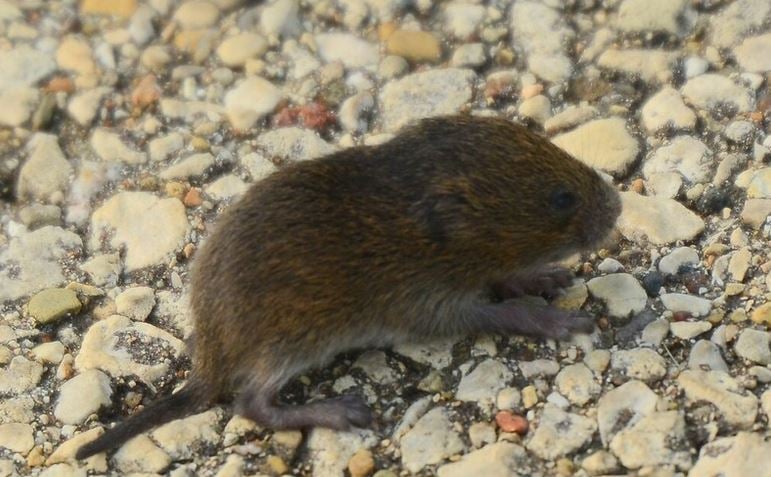Keep Rodents in the Wild and not in Your Home
 Vole
Vole Mice and voles are very similar in appearance. Both are small, brown and furry. Mice are smaller than voles, have bigger ears, and are primarily an indoor nuisance, where they get into cupboards and pantries and nest in wall cavities. Voles (sometimes referred to as "field mice") are outdoor pests. Their digging and feeding activity can cause significant damage in the garden. Though voles will eat dead animal matter, they are primarily vegetarians; their favorite foods include seeds, nuts, flower bulbs and plant roots. Voles dig shallow tunnels in and around plant roots. They also make good use of mole tunnels, which give them easy access to the root zone. In the fall, partially eaten potatoes, carrots and other root crops are indications of vole activity. Spring snowmelt often reveals chewed bark, especially on young trees and shrubs.
Prevention and Control
- There are always new generations of mice and voles around, so eradicating them is impossible. Limiting access and minimizing nesting sites is the best line of defense.
- To deter mice from coming indoors, seal potential entry points, store pet food and birdseed in metal bins and keep garbage cans tightly closed.
- Mice that do get inside the house can be caught with a snap trap. Peanut butter is an effective bait.
- In the garden, clean up plant debris that could invite nesting sites. Delay winter mulching until after a hard freeze. Protect tree trunks with a tree guard or encircle them with hardware cloth, making sure protection extends a couple inches below the soil surface and a foot or more above the soil surface.
- Voles can be repelled with castor oil spray and predator urine.
- Precious flower bulbs can be planted inside bulb cages. When planting, crushed oyster shells or finely-crushed gravel can be placed around the bulb to deter these tunneling pests.
Print this Article:
Get the Dirt
Stay up to date on new articles and advice. Please fill out the information below.
